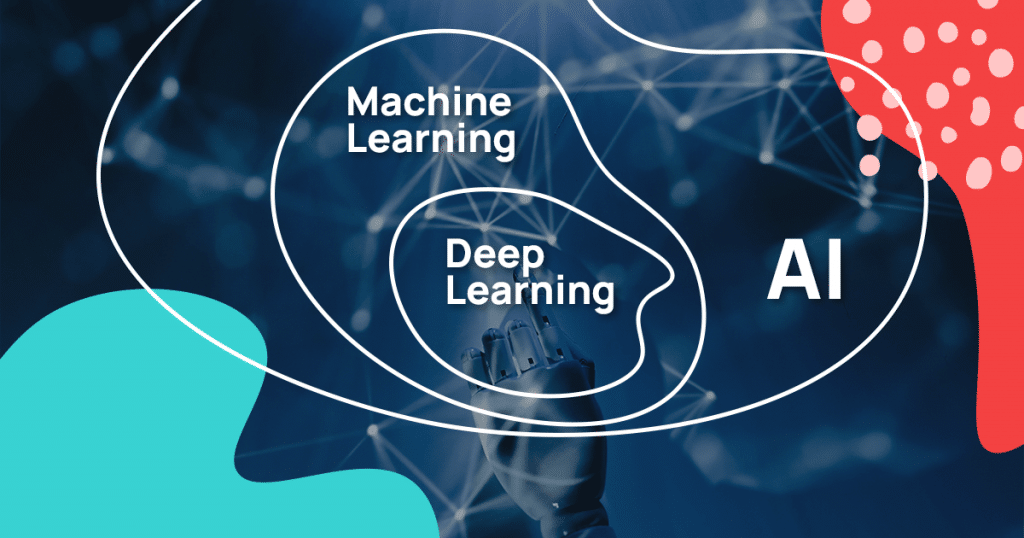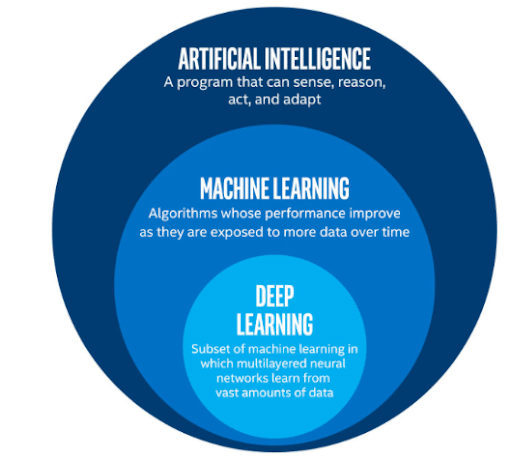Have you ever stopped to think about the differences between “AI vs Machine Learning vs Deep Learning”?
Each of these concepts serves a purpose and can be implemented differently.
To make it easier, we have written this article to explain these terms and their applicability. You’ll see:
Download this post by entering your email below
What Is Artificial Intelligence, And How Does It Work?
AI stands for artificial intelligence, which refers to a computer or algorithm acting independently after any human input.
So, a person creates a program and gives it a set of directives. Then, the program achieves those directives independently without any other information from the user.
Learning and problem-solving are also hallmarks of AI systems.
A common system can analyze data and point out errors, while AI is capable of interpreting scenarios and situations. It can, for example, identify a fraud attempt in e-commerce.
In short, it is a way to simulate the functioning of the human brain in machines and systems, interpreting information and data to use in day-to-day work.
Examples of modern AI
Although many people imagine AI machines becoming sentient and trying to destroy the world, the reality is that most of us rely on this technology in our daily lives.
Some examples of AI being used in the real world include:
Maps and navigation
In the past, getting around meant bringing a map and charting our path manually as we drove.
Then, sites like MapQuest emerged to give a set of directions, complete with handy imagery.
Modern navigation programs can now provide optimal pathways based on different information, such as avoiding toll roads or heavy traffic conditions.
AI-based navigation systems can even scan their surroundings to understand what can make a route faster or more efficient. Over time, these programs can better navigate cities than long-time residents.
User recommendations
If you’re watching Netflix, you’ll notice that the system will provide recommendations based on other shows or movies you’ve watched.
The program collects your likes and dislikes data to create a more personalized watch list.
Many user-focused sites use AI algorithms like this that get smarter and more insightful as users interact with them.
Facial recognition
Along with AI, facial recognition software also creates a lot of buzz, but only sometimes for beneficial reasons.
This software can figure out how people will look based on past images, and the results are surprisingly accurate.
AI facial recognition software can also monitor a person’s activity throughout an area by tracking their face.
These programs can even learn how to tell someone’s emotions based on subtle facial cues.
When to use AI
There are a few areas where AI can handle tasks that would take too long or be too complex. Examples can include the following:
- Data management – Data entry used to be done manually, a person would take information from the real world and put it into a computer. AI can handle this task far more efficiently and even analyze the data to develop insights and action plans.
- Sales and marketing – AI is excellent at turning user data into a personalized experience. Sales teams can create customized packages based on a person’s interests or interaction with the brand’s website. Marketing teams can capture information from leads to develop more targeted campaigns that will drive conversions.
- Customer support – AI chatbots like ChatGPT are famous for providing human-like responses to different queries. Companies can deploy these chatbots to handle initial customer support sessions. The bots can provide answers to simple questions and help filter queries by sending them to the correct department.
- Operations – AI can be deployed in complex operations with many moving parts. For example, Amazon uses AI to determine the best route for its drivers and maximize their number of deliveries. Warehouses can also use AI to reconfigure their layouts to speed up operations and make individual workers more productive. AI can also spot potential safety issues and alert managers automatically.
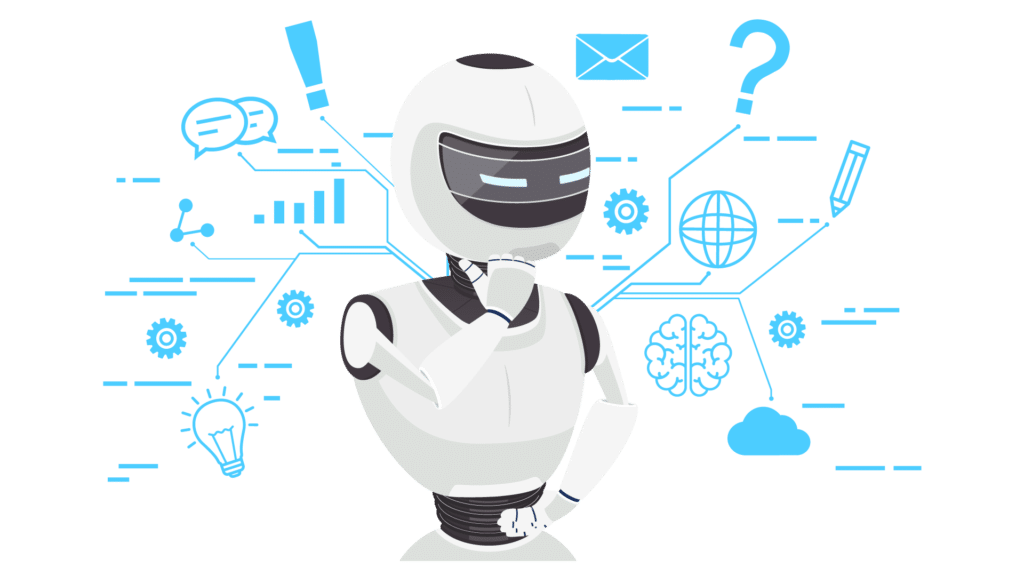
What Is Machine Learning, And How Does It Work?
Machine learning is the process of an algorithm using lots of data to learn how to perform its duties better.
Typically, machine learning programs start with a basic set of instructions and learn more about how to achieve directives as it interacts with users.
So, while a machine learning algorithm may not be precise or reliable at first, it will only improve over time.
Although AI and machine learning are often used interchangeably, they’re not the same. Instead, machine learning is a subset of AI.
Not all AI is machine learning, but all machine learning is a form of AI.
For example, when you see product recommendations on a website, that’s an example of AI.
The machine learning algorithm behind the scenes uses data provided by the customer to make personalized recommendations.
Without this data, the algorithm might suggest things based on what other people like, which may not be accurate for that particular customer.
Examples of machine learning
Most examples we listed above use machine learning to adapt to their surroundings and improve their jobs. However, for examples of authentic machine learning in action, we can look at the following:
Predictive text
We’ve all had issues with autocorrecting, changing our words unexpectedly, and shifting the meaning of our message.
However, advanced autocorrect systems will gather data from your texting habits and learn what you’re trying to say.
Over time, it will adapt to your unique language habits. This way, corrections will be more accurate and helpful.
Email filtering
On a personal level, machine learning in email software can learn which messages to filter out based on what you classify as spam (or unwanted).
On a business level, this programming can automatically segment a brand’s audience based on how they interact with its content.
For example, if someone clicks on a specific link, they’ll be added to a specific category. If someone else doesn’t open any emails, they’ll go to a retargeting campaign.
Healthcare
As machine learning programs gather data about specific diseases and their causes, they can better spot early warning signs.
This way, doctors can catch potentially harmful conditions before they get out of control.
When to use machine learning
Overall, automation and predictive analysis are the best uses of machine learning for any large and small business.
- Automate all kinds of tasks – For example, a machine learning program can analyze data from your social media platform to curate content for each user. It can also interact with your followers and learn more about them to convert them into paying customers.
- Do predictive analysis – For example, you can feed the program historical sales data and see if it can find any patterns. Then, you may discover that some products sell best at specific times of the day or during various seasons. Finally, you can use this data to understand which products to promote at any given time.
However, if using a relatively new program, it’s best to have employees interact with the algorithm to make it smarter before deploying it in real-world situations.
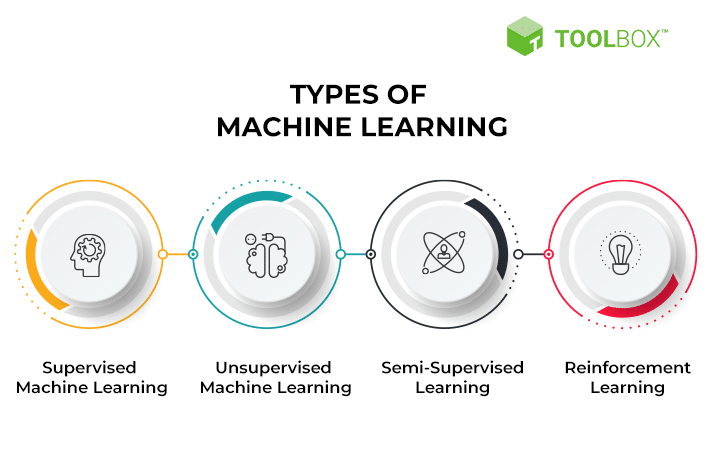
What Is Deep Learning, And How Does It Work?
Deep learning is another subset of AI that goes further than machine learning.
It is much closer to replicating the human brain by layering algorithms and codes on top of each other.
While a machine learning program requires human input, a deep learning program can often better itself.
Deep learning is complex and often results in the “black box” problem.
For deep learning systems to work, they require massive amounts of data.
However, once they analyze the data thoroughly, the program can often learn and adapt independently, even forming non-linear pathways to achieve its goals.
A “black box” problem is when a machine learns how to perform a task, but it’s not clear how it did it or why it chose that specific method.
Since the machine reached its conclusions without human interaction, programmers can’t trace its actions to achieve that result.
Examples of deep learning
Computer vision
Deep learning models can be trained to accurately classify and recognize images or objects in photos and videos.
This technology has many practical applications, such as self-driving cars, facial recognition, and medical image analysis.
Natural language processing
Deep learning can analyze, understand, and generate human-like language.
Voice assistants like Siri and Alexa, chatbots, and language translation use this technology.
Recommender systems
Deep learning algorithms can analyze user data to make personalized recommendations for products, services, or content.
This is used by platforms like Netflix, Amazon, and YouTube to suggest content based on users’ past behavior and preferences.
When to use deep learning
Deep learning is a type of artificial intelligence that has many practical applications, here are some.
- Fraud detection – As the system can identify behavior, it can detect fraud in a financial transaction or even authentication to access a system. Deep Learning works in a non-linear way, so the technology relates to different scenarios and behaviors to understand that a particular action is not appropriate and may signal a problem.
- Unsupervised automation – Google and Uber use Deep Learning to allow cars to be controlled by AI. It is a process that is still under development but has already significantly advanced. This is all thanks to the high learning capacity of the system, which can react to everyday situations in traffic. Without any supervision, the car can carry a passenger without any problems.
- Face recognition – Many smartphones already offer facial recognition systems. This process seems relatively simple and is directly related to Deep Learning. The technology can identify details to be able to determine and differentiate facial expressions, ensuring the highest security for users.
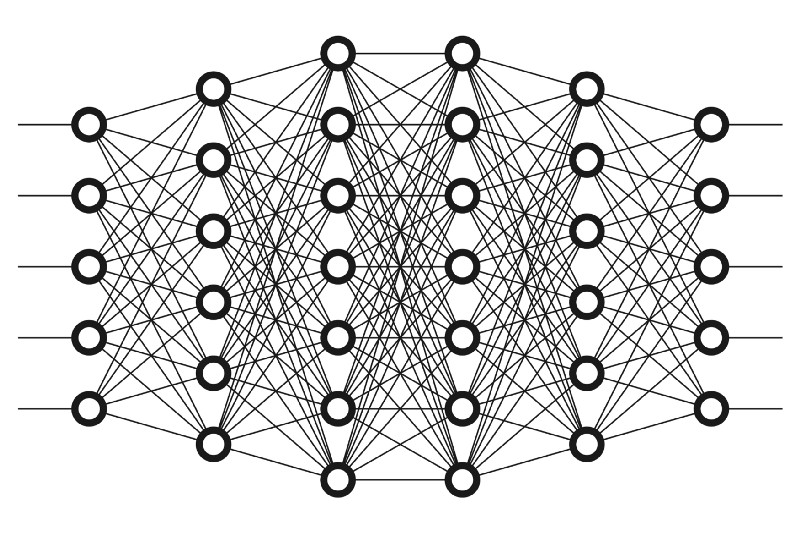
AI vs Machine Learning vs Deep Learning: What Are The Main Differences?
Now that you know more about AI, Machine Learning, and Deep Learning, it might be easier to understand the differences between them.
In short, the last two technologies are part of the universe of the first.
They are evolutions of the process, making a system even more capable of taking decisions without human interference.
AI, therefore, is an early stage of artificial reasoning, where a machine can make its own decisions but is not highly capable.
Machine and Deep Learning are even more complex stages in which systems and machines have greater autonomy, increasing the capacity for reasoning and, consequently, decision-making.
As the term “deep” indicates, Deep Learning encompasses even more complex and advanced Machine Learning.
The system creates an artificial neural network from an algorithm layer, allowing it to make its own decisions without human participation.
In summary, the three technologies differ in logic and algorithm, allowing them to have different objectives and applicability within a company.
But they complement each other, representing varying degrees of capability. The use of each varies according to the demands.
Moving Forward
More than merely knowing the answer to the “AI vs Machine Learning vs Deep Learning” question, it is important to comprehend how to integrate these technologies to get your strategies to perform better.
Understanding the differentials of each concept, it is possible to make more comprehensive and complete use of them within your organization, leveraging different areas and sectors to achieve better results.
With this knowledge in mind, why not explore the AI tools offered by Rock Content?
By blending human creativity with AI efficiency, these tools can help take your business to the next level!
